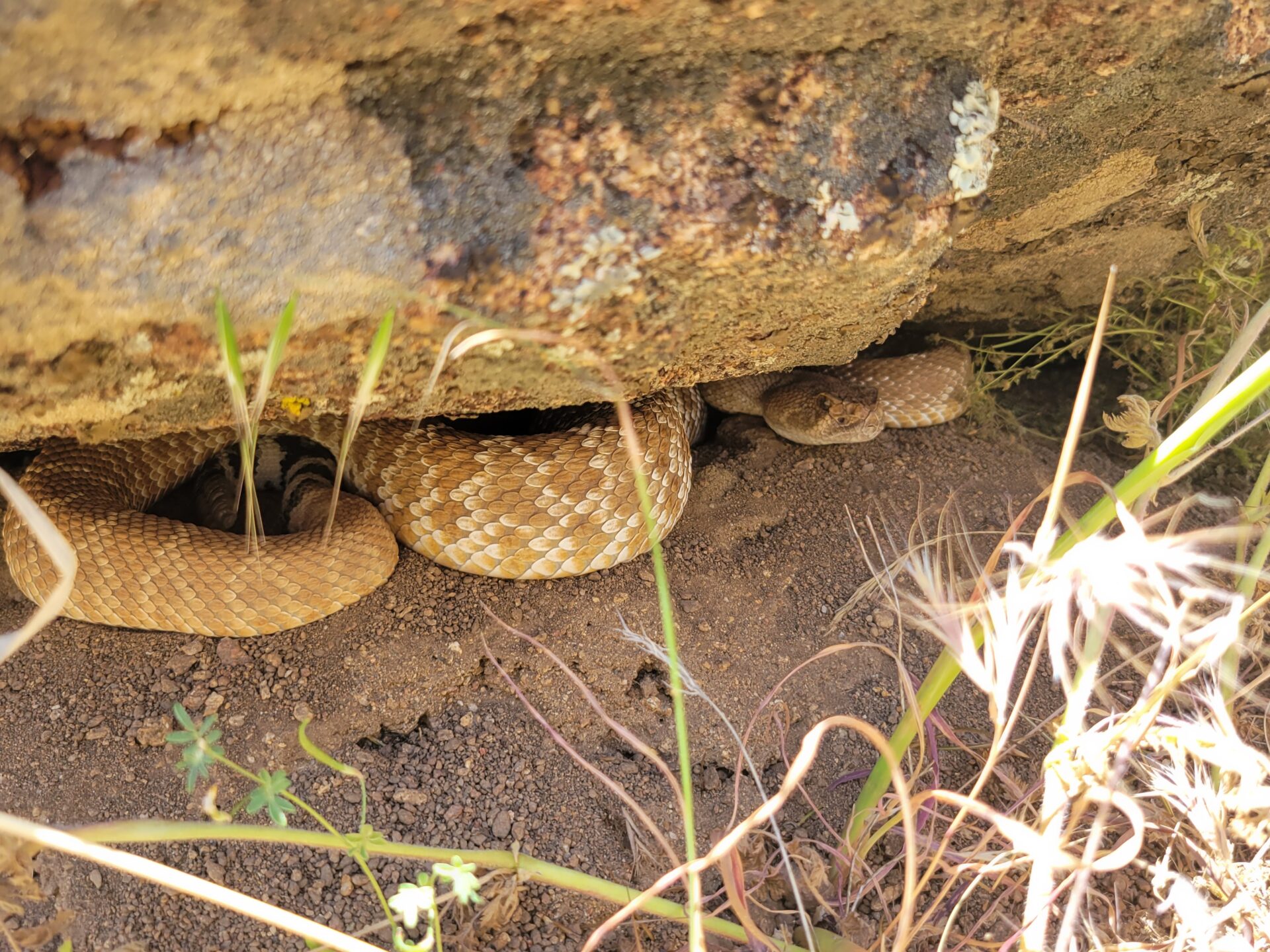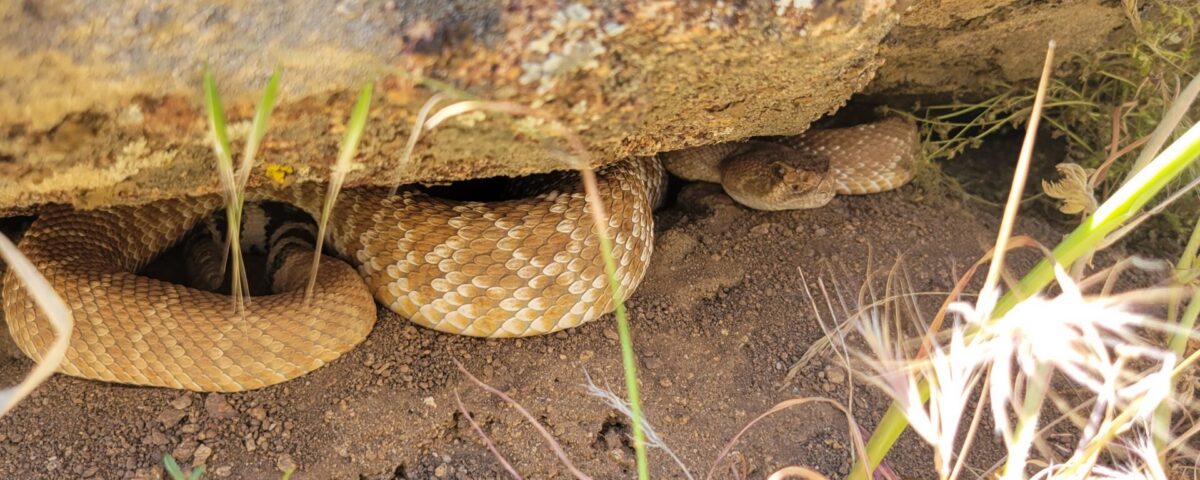
Julie Johnstone to Head Planning Department
July 11, 2023
Consider Your Plastics
July 18, 2023
Creature Feature: Red Diamond Rattlesnake
Author: Brittany Dell
In recognition of World Snake Day, annually celebrated on July 16th, we’d like to take a moment to appreciate one of the seven rattlesnake species found in California: the red diamond rattlesnake (Crotalus ruber). This rattlesnake is found in southern California and along the Baja California peninsula in Northern Mexico, with a large portion of its range existing near densely populated areas. Because of this, the species faces the adverse impacts of development and agriculture, which have resulted in habitat loss and fragmentation. To provide the population with some protection from these threats, the State of California Department of Fish & Wildlife recognizes this snake as a Species of Special Concern. It is also the only species of rattlesnake in California that is illegal to harvest or collect.
Although rattlesnakes are venomous, their threat to humans is often grossly exaggerated. Data from the Centers for Disease Control and Prevention (CDC) demonstrates that dying from a snake bite in the United States is much less likely than dying from a lightning strike, dog attack, falling furniture, falling off a ladder or tree, and car accidents. Once fear is set aside, it’s possible to focus on the important roles these creatures play in balancing the ecosystem. Various rodent species that can damage plants and carry disease make up their primary food source. The red diamond has been documented to consume a diet composed of 92% mammals, 8% lizards, and 1% birds. The University of Nebraska Lincoln reports that rodent and bird damage significantly impacts crop yield in California, which is a leader in agricultural crop production in the U.S., with a total of $38 billion worth of goods produced annually. Snakes provide a valuable function as natural pest control.
Proteins in snake venom also have the potential to give life through the treatment of diseases like cancer. Since only a small fraction of snake venom components have been identified, under 0.1 %, there is still high potential to discover new components to be used in western medicine.
If you are lucky enough to encounter one of these beautiful creatures in the wild, don’t panic! There are ways to avoid snakebites. Hopefully, with a bit of understanding, you can appreciate the value of these animals and learn to live amongst them with an appropriate, healthy concept of fear that is equally beneficial for snakes and humans. Having a reasonable level of fear is necessary to keep us at a safe distance from danger. Too much fear, however, may lead some to attempt to harm the snake, which is riskier than letting it live and giving it space. Even if you still choose to dislike them, know that keeping them around does benefit you, those you love, the greater good of society, and the environment.

